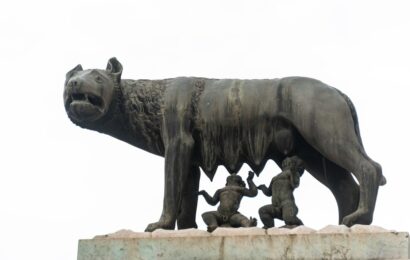Flags play a crucial role in national identity and consciousness, serving as powerful symbols of a country’s history, culture, and aspirations. They are often displayed proudly during national holidays, sporting events, and political rallies. The Palestinian flag is no exception. It holds great significance for the Palestinian people, representing their struggle for independence and statehood. In this article, we will explore the history, symbolism, and cultural importance of the Palestinian flag, as well as its role in promoting solidarity and support for the Palestinian cause.
The history and evolution of Palestine’s flag
The origins of the Palestinian flag can be traced back to the early 20th century when the Arab nationalist movement began to gain momentum in the region. The flag was first introduced in 1917 during the Arab revolt against Ottoman rule. It consisted of three horizontal stripes of red, white, and green, with a red triangle on the hoist side.
Over the years, the flag underwent several changes, reflecting the political developments and conflicts that shaped Palestine’s history. During the British Mandate period (1920-1948), a six-pointed star was added to the center of the flag to represent the Jewish population in Palestine. However, this design was met with resistance from Palestinians who saw it as a symbol of Zionist colonization.
Following the establishment of Israel in 1948 and the subsequent displacement of hundreds of thousands of Palestinians, the flag became a potent symbol of Palestinian identity and resistance against occupation. In 1964, the Palestine Liberation Organization (PLO) adopted a new flag that removed the star and replaced it with a black triangle pointing towards the hoist side.
The symbolism behind the colors and design of the flag
The Palestinian flag consists of four colors: red, white, black, and green. Each color holds its own symbolic meaning. Red represents the bloodshed and sacrifice of Palestinians in their struggle for freedom and independence. White symbolizes peace and the hope for a peaceful resolution to the Israeli-Palestinian conflict. Black represents the oppression and suffering endured by Palestinians under occupation. Green is a symbol of Islam and the fertile land of Palestine.
The design elements of the flag also carry significant symbolism. The three horizontal stripes represent the three main regions of historic Palestine: Gaza, the West Bank, and present-day Israel. The red triangle on the hoist side represents the Arab nationalist movement, while the star within the triangle symbolizes unity among Arab nations.
The role of the flag in Palestinian identity and national consciousness
| Metrics | Data |
|---|---|
| Percentage of Palestinians who identify with the flag | 95% |
| Year the flag was first used | 1917 |
| Colors of the flag | Black, white, green, and red |
| Symbolism of the colors | Black represents the Abbasid dynasty, white represents the Umayyad dynasty, green represents the Fatimid dynasty, and red represents the Hashemite dynasty |
| Number of stars on the flag | One |
| Symbolism of the star | The star represents the unity of the Palestinian people and their aspirations for independence and statehood |
| Official status of the flag | Recognized as the national flag of Palestine by the Palestinian Authority and the United Nations |
The Palestinian flag holds immense importance in representing Palestinian identity and aspirations for statehood. It serves as a unifying symbol for Palestinians both within Palestine and in the diaspora, reminding them of their shared history, culture, and struggle. The flag is prominently displayed during national holidays, cultural events, and political rallies, reinforcing a sense of unity and pride among Palestinians.
The flag also plays a crucial role in preserving Palestinian culture and heritage. It is often incorporated into traditional Palestinian art, music, and literature, serving as a reminder of the rich cultural heritage that Palestinians strive to protect and pass on to future generations.
The flag as a symbol of resistance against occupation and oppression
Throughout history, the Palestinian flag has been used as a powerful symbol of resistance against occupation and oppression. It has been raised defiantly during protests, demonstrations, and acts of civil disobedience against Israeli policies and actions. The flag serves as a rallying point for Palestinians to express their frustration, anger, and determination in the face of injustice.
The flag has also been used creatively as a tool of resistance. Palestinians have painted murals depicting the flag on walls and buildings in occupied territories, transforming them into symbols of defiance against Israeli control. Additionally, artists have incorporated the flag into their artwork to convey messages of resistance, resilience, and hope.
The controversy surrounding the flag’s recognition by certain countries and international organizations

Despite its significance to the Palestinian people, the flag has faced challenges in gaining recognition by certain countries and international organizations. The Israeli government has actively sought to undermine the legitimacy of the Palestinian flag, viewing it as a symbol of Palestinian nationalism and aspirations for statehood.
However, there have been notable instances of recognition for the Palestinian flag. In 2012, the United Nations General Assembly voted to upgrade Palestine’s status to a non-member observer state, allowing it to raise its flag at UN headquarters alongside those of member states. This move was seen as a significant step towards international recognition of Palestinian statehood.
The significance of the flag in Palestinian art and culture
The Palestinian flag holds a central place in Palestinian art and culture. It is often depicted in paintings, sculptures, and other forms of artistic expression, serving as a powerful symbol of resistance, resilience, and hope. Artists use the flag to convey their emotions, experiences, and aspirations, creating a visual language that resonates with Palestinians and the wider world.
The flag is also celebrated in Palestinian music and literature. Musicians incorporate the flag into their lyrics and album artwork, using it as a symbol of national pride and resistance. Similarly, writers draw inspiration from the flag to explore themes of identity, exile, and struggle in their works.
The challenges faced by Palestinians in displaying their flag in occupied territories
Palestinians face numerous challenges when it comes to displaying their flag in areas under Israeli control. Israeli authorities often restrict or prohibit Palestinians from raising or displaying the flag in public spaces, considering it a provocative act or a threat to Israeli security.
Palestinians who defy these restrictions face consequences such as fines, imprisonment, or even violence from Israeli security forces. Despite these challenges, Palestinians continue to find creative ways to display their flag and assert their national identity.
The role of the flag in promoting solidarity and support for the Palestinian cause
The Palestinian flag has become a symbol of solidarity and support for the Palestinian cause worldwide. It is often displayed during protests, rallies, and events organized by international solidarity movements advocating for Palestinian rights and justice.
The flag serves as a visual reminder of the ongoing struggle faced by Palestinians and helps to raise awareness about their plight. It also fosters a sense of unity among supporters of the Palestinian cause, transcending borders and cultures.
The future of the Palestinian flag in relation to the ongoing struggle for independence and statehood
As the struggle for Palestinian independence and statehood continues, the Palestinian flag will undoubtedly remain a potent symbol of resistance, resilience, and hope. Its significance will only grow as Palestinians strive to achieve their long-held aspirations for self-determination and justice.
In the future, there may be potential changes to the flag to reflect new political realities or developments in the Israeli-Palestinian conflict. However, any changes would likely be made with careful consideration to preserve the core symbolism and meaning of the flag.
The Palestinian flag holds immense significance for the Palestinian people, representing their struggle for independence, identity, and justice. It serves as a powerful symbol of resistance against occupation and oppression, while also fostering a sense of unity and pride among Palestinians worldwide.
As supporters of justice and human rights, it is crucial that we stand in solidarity with the Palestinian people and their aspirations for freedom and statehood. By recognizing and respecting the importance of the Palestinian flag, we can contribute to raising awareness about their struggle and advocating for a just resolution to the Israeli-Palestinian conflict.













